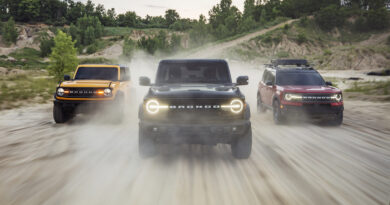12% EV range drop for Tesla … according to Tesla website
Teslas have copped an overnight electric car range reduction – at least according to Tesla’s website.
But the change that claims some Teslas will travel around 12 percent less than they did last week is purely a tweak of the numbers rather than any real change to how far the most popular electric cars on the Australian market will travel between charges.
And the move to adopt four letters – WLTP, or World harmonised Light vehicle Testing Procedure – has predominantly impacted the top-selling Model 3.
It means the Tesla Model 3 Standard Range Plus (SR+) – the most affordable Tesla on the market, at about $68,000 – is now claimed to travel 448km, 12 percent less than the 508km that was claimed last week.
The Model 3 Long Range is also a little less long range, dropping from 657km of claimed range to 580km.
In describing the WLTP figures Tesla says: “Range figures shown are based on the WLTP standard which may be useful in comparing ranges among electric vehicles. Your actual vehicle range will vary depending on the vehicle configuration, battery age and condition, driving style and operating, environmental and climate conditions.”
The move to finally adopt the more realistic WLTP range predictions means would-be Tesla customers will now have a better idea of how far their car will travel on a charge, although even so our experience suggests it’s still a tad optimistic in everyday driving.

After spending a few weeks in a Tesla Model 3 Standard Range Plus we found a range of about 400km – around 10 percent less than the new claims – was more realistic.
The move to adopt lower WLTP range forecasts was presumably triggered by customer feedback, with some no doubt miffed their car would not travel as far as Tesla suggested.
Car makers in Australia often quote unrealistic EV range figures on their websites referencing the Australian Design Rules (ADR) standard rather than those more likely to represent how people will use the cars. Those ADR figures are the ones car makers legally have to quote on the yellow sticker on the windscreen of a car when it’s in a dealership.
However, Nissan quotes WLTP figures for its Leaf and Leaf e+ on its website and Hyundai does the same for its Kona Electric and Ioniq Electric.
One Tesla that hasn’t copped an overnight range reduction is the delayed Model S Plaid and the updated Model S Long Range.
Tesla shaved a few kilometres off their range a few weeks ago – the Model S Long Range dropped from 663km to 652km – in turn quoting WLTP figures. Each is now due in Australia until late 2022 at the earliest.





In my experience, WLTP gives a very close approximation of day to day range in a city based mixed use scenario (ie stop/start, residential and freeway driving). Many cars can easily exceed their WLTP if driven carefully (I don’t mean hypermiled, just removing the lead foot). The MINI is one such example. Driven in a spirited, but legal way (ie don’t speed), you will get the WLTP range almost to the km. Driven without having fun (ie. don’t floor it at every chance), you will go 250+, or just under 10% further. Hypermile and 280 is possible. I’ve had one for 9 months and these are the ranges I actually get.
The Taycan is another example of a car which can easily beat its WLTP in the real world. The Tesla figures tend to be best case scenario. They still go a long way 😉